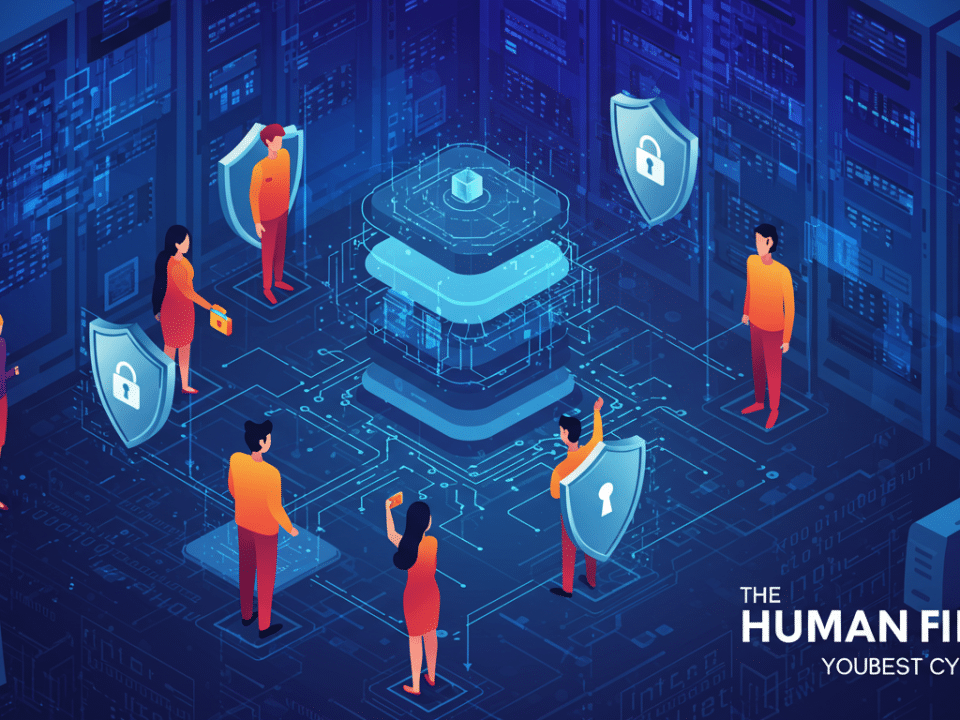
Location Data Breach: A Stark Reminder of the Need for Strong Data Security and Privacy
January 11, 2025
Deceptive iMessage Phishing Scam: A New Tactic to Bypass Apple Security
January 14, 2025In today’s digital landscape, a robust cybersecurity posture is no longer a luxury – it’s a necessity. Cyber threats are constantly evolving, and organizations of all sizes must proactively implement security strategies and solutions to protect their valuable assets. But with a vast array of technologies, methodologies, and best practices available, where do you even begin?
As your trusted cybersecurity partner, Krypto IT is committed to providing practical guidance. This blog post will outline a structured approach to implementing effective security strategies and solutions, empowering you to build a strong defense against cyber threats.
1. Conduct a Comprehensive Security Assessment
Before implementing any security measures, it’s crucial to understand your current security posture and identify vulnerabilities. A comprehensive security assessment should include:
- Vulnerability Scanning: Automated scanning of networks, systems, and applications to identify known vulnerabilities.
- Penetration Testing: Simulated attacks to test the effectiveness of your security controls and identify exploitable weaknesses.
- Risk Assessment: A formal process to identify, analyze, evaluate, and prioritize risks to your information assets. This should involve identifying threats, vulnerabilities, and the potential impact of a security incident.
- Security Audit: An independent review of your security controls, policies, and procedures to ensure they are effective and compliant with relevant standards.
2. Develop a Strategic Security Plan
Based on the findings of the security assessment, develop a strategic plan that outlines your security objectives, priorities, and the steps you will take to achieve them. This plan should:
- Align with Business Objectives: Ensure that security measures support and enable your overall business goals.
- Define Scope and Objectives: Clearly define the scope of the security program and its specific objectives.
- Prioritize Risks: Focus on addressing the most critical risks first.
- Assign Responsibilities: Clearly define roles and responsibilities for implementing and maintaining security measures.
- Establish Metrics: Define metrics for measuring the effectiveness of your security program.
3. Implement a Layered Security Approach (Defense in Depth)
No single security measure is foolproof. A layered security approach, also known as defense in depth, involves implementing multiple security controls at different levels of your IT infrastructure. This creates a more resilient defense, as attackers must overcome multiple barriers to reach their target. Key layers include:
- Network Security:
- Firewalls: Control network traffic and block unauthorized access.
- Intrusion Detection and Prevention Systems (IDPS): Monitor network traffic for malicious activity and block attacks.
- Virtual Private Networks (VPNs): Secure remote access to the corporate network.
- Network Segmentation: Divide the network into smaller, isolated segments to limit the impact of a breach.
- Endpoint Security:
- Antivirus/Anti-Malware: Protect endpoints (desktops, laptops, servers) from malware infections.
- Endpoint Detection and Response (EDR): Provide advanced threat detection, investigation, and response capabilities on endpoints.
- Data Loss Prevention (DLP): Prevent sensitive data from leaving the organization.
- Full-Disk Encryption: Protect data on devices in case of loss or theft.
- Application Security:
- Secure Coding Practices: Train developers to write secure code that is less vulnerable to attacks.
- Web Application Firewalls (WAFs): Protect web applications from attacks such as SQL injection and cross-site scripting (XSS).
- Regular Security Testing: Conduct vulnerability scanning and penetration testing of applications.
- Data Security:
- Data Encryption: Encrypt sensitive data both in transit and at rest.
- Access Control: Implement strong access controls based on the principle of least privilege.
- Data Backup and Recovery: Regularly back up critical data and have a plan for restoring it in case of an incident.
- Identity and Access Management (IAM):
- Strong Password Policies: Enforce strong password requirements (see detailed section below).
- Multi-Factor Authentication (MFA): Require users to provide multiple forms of authentication.
- Privileged Access Management (PAM): Securely manage and monitor accounts with elevated privileges.
- Physical Security:
- Access Controls: Secure physical access to facilities, server rooms, and other sensitive areas.
- Surveillance Systems: Use security cameras and other monitoring systems.
- Environmental Controls: Protect against physical threats like fire, flood, and power outages.
4. Establish Security Policies and Procedures
Clear and comprehensive security policies and procedures are essential for guiding employee behavior and ensuring consistent implementation of security measures. Key policies include:
- Acceptable Use Policy: Defines acceptable use of company IT resources.
- Data Security Policy: Outlines how sensitive data should be handled and protected.
- Incident Response Plan: Specifies procedures for responding to security incidents.
- Remote Work Policy: Addresses security considerations for remote employees.
- Password Policy: (See detailed section below)
5. Implement Security Awareness Training
Employees are often the weakest link in cybersecurity. Regular security awareness training is crucial to educate employees about:
- Common Threats: Phishing, social engineering, malware, etc.
- Safe Browsing Practices: Avoiding suspicious websites and downloads.
- Password Security: Creating and managing strong passwords.
- Data Handling: Proper handling of sensitive information.
- Incident Reporting: How to report suspicious activity or security incidents.
6. Continuous Monitoring and Improvement
Cybersecurity is an ongoing process, not a one-time project. Continuously monitor your security posture, adapt to new threats, and improve your defenses over time. This includes:
- Security Information and Event Management (SIEM): Collect and analyze security logs to detect and respond to threats.
- Threat Intelligence: Stay informed about emerging threats and vulnerabilities.
- Regular Security Assessments: Periodically reassess your security posture and update your security strategy accordingly.
Password Policy Best Practices
A robust password policy is a cornerstone of a strong security program. Here are some essential elements:
- Password Complexity:
- Enforce minimum length requirements (at least 12 characters, preferably longer).
- Require a mix of uppercase and lowercase letters, numbers, and symbols.
- Disallow common words or easily guessable information (e.g., “password,” “123456”).
- Password Expiration:
- While the need for frequent changes is debated, having a policy in place or prompting changes when a compromise is suspected is crucial.
- Prevent the reuse of old passwords.
- Account Lockout:
- Implement account lockout after a certain number of failed login attempts (e.g., 3-5 attempts).
- Define a lockout duration (e.g., 30 minutes).
- Multi-Factor Authentication (MFA):
- Mandate MFA for all users, especially those with access to sensitive data or systems.
- Password Storage:
- Never store passwords in plain text.
- Use strong, salted hashing algorithms to store passwords securely.
- Employee Training:
- Educate employees on creating strong passwords and the importance of not reusing passwords across different services.
- Encourage or mandate the use of password managers.
Krypto IT: Your Partner in Implementing Effective Security Strategies
Implementing a comprehensive cybersecurity strategy can seem daunting, but it’s essential for protecting your organization in today’s threat landscape.
Krypto IT can help you every step of the way. Our services include security assessments, security strategy development, technology implementation, policy development, security awareness training, and ongoing security monitoring. We can tailor a solution to your specific needs and budget, helping you build a robust and resilient security posture.
Contact us today for a free consultation and let us help you secure your organization’s future.
Don’t wait for a cyberattack to test your defenses. Be proactive. Be prepared. Be secure with Krypto IT.
#Cybersecurity #SecurityStrategy #RiskManagement #VulnerabilityManagement #PenetrationTesting #DataSecurity #InfoSec #CyberDefense #ThreatIntelligence #SecurityAwareness #PasswordSecurity #KryptoIT #SecuritySolutions #IncidentResponse #CloudSecurity #NetworkSecurity




